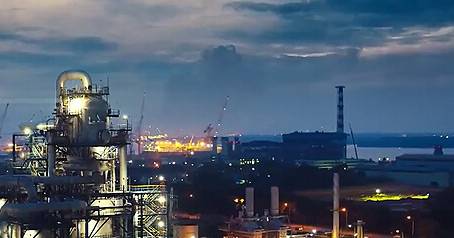Dec . 03, 2024 12:39 Back to list
hdpe duct pipe
Understanding HDPE Duct Pipe A Comprehensive Overview
High-Density Polyethylene (HDPE) duct pipes have emerged as a popular choice in various industries, thanks to their exceptional properties and versatility. These pipes serve a multitude of applications, particularly in the telecommunications, energy, and water distribution sectors. This article delves into the characteristics, advantages, applications, and installation considerations of HDPE duct pipes, demonstrating why they are a preferred option in modern infrastructure projects.
What is HDPE?
HDPE is a thermoplastic polymer made from petroleum. Known for its high strength-to-density ratio, HDPE possesses a robust molecular structure that provides excellent resistance to impact, chemicals, and UV radiation. These properties make HDPE an ideal material for duct pipes, which are crucial in protecting and channeling cables and fluids.
Key Characteristics of HDPE Duct Pipes
One of the standout features of HDPE duct pipes is their flexibility. This allows for easier installation and adaptability to diverse environmental conditions. Additionally, HDPE pipes are lightweight, making them easier to transport and install compared to traditional materials like concrete or metal.
Another key characteristic is their corrosion resistance. Unlike metal pipes that can rust or corrode over time, HDPE pipes are immune to chemical reactions that could compromise their integrity. This durability extends the lifespan of the pipes, often exceeding 50 years with proper installation and maintenance.
Advantages of HDPE Duct Pipes
1. Cost-Effective Although the initial investment may be higher than some traditional materials, the long-term savings associated with reduced maintenance, longevity, and efficiency make HDPE an economical choice.
2. Environmental Resistance HDPE duct pipes can withstand a range of environmental factors, including extreme temperatures and moisture, which is essential for outdoor installations. Their resistance to chemicals also makes them suitable for various industrial applications.
3. Low Friction Factor The smooth inner surface of HDPE pipes minimizes friction during fluid or gas flow, leading to improved efficiency and reduced energy costs. This characteristic is particularly beneficial in wastewater systems or sewage applications.
4. Easy Installation The lightweight nature of HDPE pipes simplifies the handling and installation process. They can be easily cut and fused together using specialized equipment, which reduces the need for fittings and connectors.
5. Recycling Potential HDPE is fully recyclable, contributing to sustainability efforts. At the end of their life cycle, these pipes can be processed and repurposed, minimizing waste and environmental impact.
hdpe duct pipe

Applications of HDPE Duct Pipes
HDPE duct pipes find extensive use across various sectors
- Telecommunications These pipes provide protective conduit for fiber optic cables, ensuring that data transmission systems remain operational without interference.
- Electrical Systems In electrical applications, HDPE duct pipes safeguard underground cables from damage due to environmental factors.
- Water Supply HDPE is increasingly being utilized in water distribution systems due to its resistance to corrosion and chemicals.
- Sewer Systems The durability and longevity of HDPE make it a viable option for sewage treatment and stormwater management systems.
Installation Considerations
When considering the installation of HDPE duct pipes, several factors should be evaluated to ensure success
- Soil Conditions Understanding the soil type and its impact on pipe performance is crucial. In some cases, additional support or trench preparation might be necessary.
- Temperature Effects While HDPE pipes are resistant to temperature fluctuations, it's essential to account for thermal expansion during installation, especially in areas exposed to extreme heat or cold.
- Proper Jointing Techniques Ensuring that the joints are adequately fused is vital to prevent leaks or structural failure. Professionals with experience in HDPE installation should be utilized to ensure proper techniques are employed.
Conclusion
In summary, HDPE duct pipes represent an innovative solution for modern infrastructure needs. Their superior properties, combined with economic and environmental advantages, make them an excellent investment for a wide range of applications. As industries continue to seek materials that enhance efficiency and sustainability, HDPE duct pipes are likely to play an increasingly significant role in future developments. Understanding the benefits and considerations associated with HDPE will enable businesses and individuals to make informed decisions about their infrastructure endeavors.
-
PVC Transparent Sheet Roll - Durable & Flexible PVC Plastic Sheet Roll for Industrial & Home Use
NewsJun.24,2025
-
High-Quality PVC PPR Pipes and Fittings Durable ERA PPR Solutions
NewsJun.10,2025
-
High-Quality Large HDPE Sheets & Large Diameter PVC Pipe Durable Large PVC Pipe Supplier
NewsJun.10,2025
-
High Density Polyethylene Cutting Board - Durable & Food Safe
NewsJun.09,2025
-
3 Inch PVC Pipe for Durable Irrigation Affordable & Reliable
NewsJun.09,2025
-
Premium PPR Plastic Water Pipe Fittings - Durable & Leak-Free
NewsJun.09,2025

